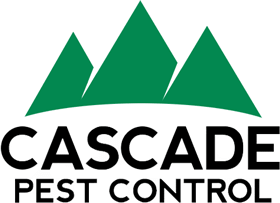Author: Kurt Treftz, Cascade Pest Control
No one wants to flip on the bathroom light and find themselves face-to-face with twitchy antennae, a plethora of legs, or scurrying feet. However, there are a number of pests that are attracted to the very rooms we use to get clean.
So, let’s identify some common bathroom pests and what you can do about them.
What Are Common Bathroom Pests?
Drain flies
Drain flies (also known as sink flies, sewer flies, or sewer gnats) are small winged creatures with furry bodies that almost resemble a moth. They are so small (⅛ in) that they are sometimes mistaken for fruit flies. They feed on the sludge and decaying matter in your drains (hence their name). They are most often found in floor drains or pipes that don’t get flushed out often but they can also come up through your tub and sink, especially if your old pipe has a leak somewhere along the way that allows them access.
Cockroaches
Oh, the bane of roaches. These nocturnal, hard-to-eliminate pests can often be found in bathrooms because they are a source of moisture and even the decay in your pipes. Of course, the trouble with cockroaches is that, if you’ve seen one, you can be pretty sure it has friends around. Roaches are usually reddish-brown to black in color and grow up to 3+inches in length. This insect is insidious and might require professional intervention.
Silverfish
Like the others on this list, silverfish are attracted to bathrooms for the moisture. In particular, moisture that grows mold can attract these silver insects. Silverfish are identified by their antenna and three-pronged tail, as well as their lightning-quick movement that looks like they are swimming (earning them the “fish” label).
Centipedes
The house centipede gets its name because it is the only type of centipede to invade homes. They often come inside looking for food (other insects) and water so bathrooms can be prime real estate. This many-legged (15 pairs) creature may be frightening to look at with its narrow body and long, sweeping legs. These long-lived creatures can actually survive in your home for years without your knowledge. They range in length from an eight of an inch all the way up to six inches. They are not often seen because of their nocturnal nature. Although they can bite, their small forcipules have difficulty breaking skin and even successful bites produce mild, bee-sting-like pain.
Ants
Common ant species that are found in bathrooms include pharaoh ants and carpenter ants. Both are attracted to the warm, wet environment. Pharaoh ants are yellow or brown with a darker rear segment. Rather than burrowing, they like to hide, finding space under or behind anything not sealed down. Carpenter ants are black, brown, or red and sometimes have wings. They can be found in bathrooms seeking moisture. They are drawn to wet wood, which they don’t eat but chew through leaving sawdust behind.
Spiders
Spiders can be found just about anywhere in the home but they like to make use of the bathroom to attract their prey. Spiders themselves aren’t necessarily searching for moisture, but they are searching for the insects that are attracted to the warm, wet environment. Opportunists that they are, they prefer to let the bathroom do the job of luring their prey. You won’t find a lot of webs in a bathroom either (unless it is in the dark for an unused cabinet).
Preventing Bathroom Pests
- Fix leaks and moisture build-up as quickly as possible.
- If you don’t already have one, install an exhaust fan in your bathroom and use it!
- Repair any drain issues (particularly holes in your pipes) that can cause leakage and allow bugs to enter.
- Clean your drains. Scrub in and around your drains. Use a stiff brush to reach as far as you can and eliminate sludge. Then pour boiling water down the pipes. You can also create a good natural rinse using baking soda and vinegar. Mix ½ cup salt and ½ cup baking soda and pour it into the drain. Follow that with 1 cup of white vinegar. The reaction will create foaming. Leave it overnight to kill any drain fly larvae. In the morning, pour very hot water down to rinse it.
- Empty trash frequently and clean the cans.
- Mop floors and make sure they are clear of organic matter that might attract pests.
Many of these common pests are nocturnal so you might not always be obvious. At the first sign of trouble, don’t hesitate to call the professionals at Cascade Pest Control at 888-989-8979.
